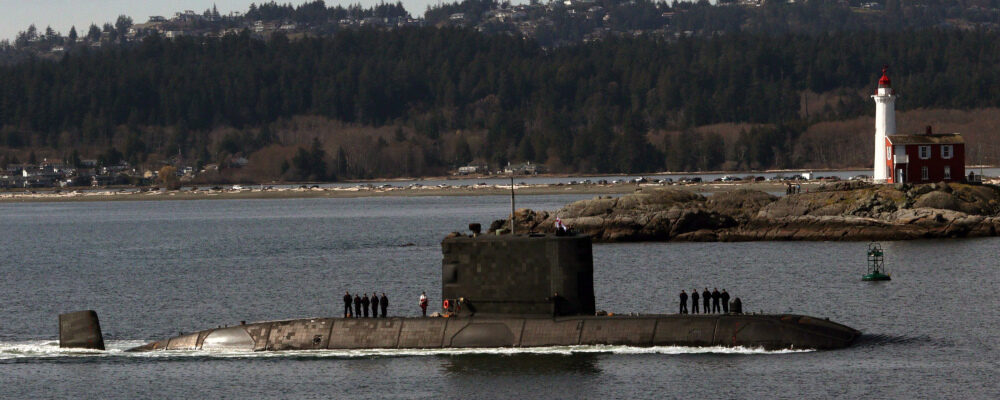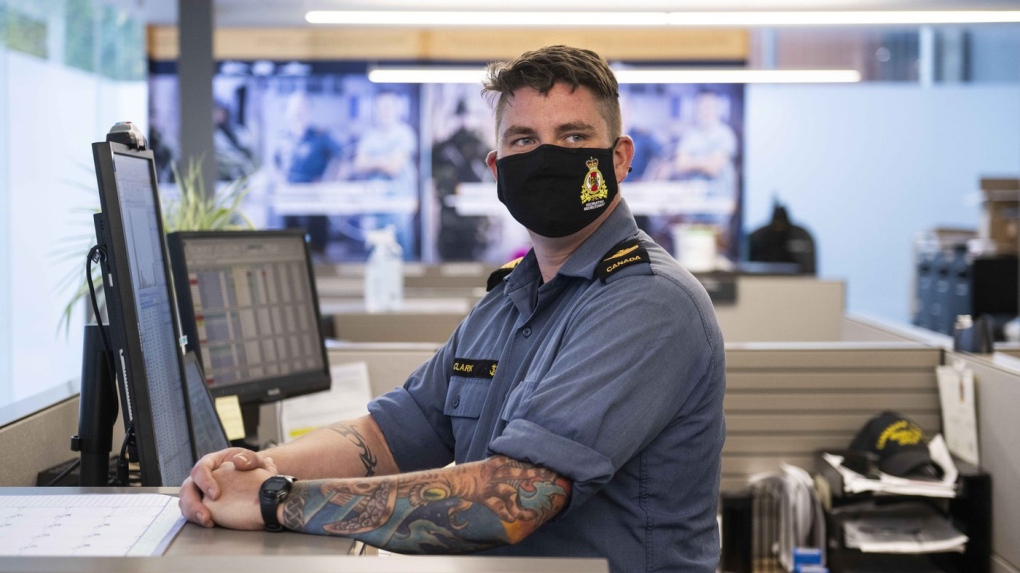Canada's Backward Military Preparedness
"There was over $10 billion planned spending under SSE [Strong, Secure, Engaged] for 2023/24, and only $6 billion was asked for in the estimates."Parliamentary Budget Office analyst Christopher Penney"Right there we're at a disadvantage, especially if we insist on having Canadian-made major equipment.""[Juggling competition with speed, expediency and financial prudence requires a] delicate balancing act [between cost and value for money], while also ensuring, as had been the government's policy for some time now, to develop a domestic defence capability."Parliamentary Budget Officer Yves Giroux
 |
| Prime Minister Justin Trudeau gestures while visiting NATO troops at Adazi Military Base in Latvia in 2018. (Roman Koksarov/The Associated Press) |
Appearing
before Parliament's National Defence Committee looking for insight on
recent reports on Canada's defence policy with the inclusion of PBO
Giroux's 2022 report on life cycle costs of Canada's Canadian Surface
Combatants shipbuilding initiative, the June 2022 analysis of Canada's
attempts to meet NATO's two percent defence spending benchmark and the
PBO's March 2022 examination of planned capita spending under the
country's defence policy, Strong Secure, Engaged, Mr. Giroux noted the
Canadian government was underspending what was outlined in current
defence policy.
Canada's
notorious inefficiency in military procurement, its penchant for
waiting out dilemmas, for buying other countries' castoff military
equipment and finding itself with ageing and spent duds, matches the
government's disinterest in the plight of a vastly undermanned and
under-equipped military whose resources have been diverted to domestic
emergencies and which finds itself incapable of stretching itself to
respond to international incidents and calls on cooperation with NATO.
Canada's
reliance on foreign military procurement, its leasing of other
countries' heavy-lifting equipment as a reflection of its own inadequate
military equipment inventory, its inefficient purchasing authority,
pointed out the Parliamentary budget officer, is hamstringing its
ability to meet defence targets. Even what has been outlined in current
defence policy sees the government underspending. Capital spending
shortfalls of $1.5 billion added to shortfalls of $4 billion this fiscal
year.
"We shouldn't be the first organization that gets called to help, domestically [in natural disaster emergencies] the provinces are responsible and should get help from the feds, then reach out to the military. That's the way it should roll out. But increasingly ... the military is getting called earlier and earlier. The senior leaders in the military, I know from the discussions, they find that a bit frustrating. Because the provinces have the equipment and the infrastructure and the experience and the budgets.""When the military does this it's basically downing tools and everything else it is doing to switch gears and go to communities."Retired 41 Canadian Brigade Group Commander Mike Vernon
 |
| A crew of 59 aboard the HMCS Chicoutimi pass by Fisgard Lighthouse as they arrives at CFB Esquimalt, B.C., on Wednesday, March 21, 2018. Chad Hipolito/The Canadian Press. |
The
Canadian military has increasingly been called upon to fight fires, to
shovel magnitude snowfalls, to deliver vaccines during the pandemic; by
stealth and accommodation this has become a portion of the Canadian
Armed Forces mandate. An acute situation made all the more so in the
face of dwindling resources, of both equipment and personnel, amidst a
growing call on soldiers "as a force of last resort"
to help cope with extreme weather events. A situation that is seen as
potentially compromising the military's preparedness as a combat-ready
force.
"For a number of reasons -- cultural reasons, readiness reasons, equipment -- it's a weekly topic of conversation"
remarked Commander Vernon. Who had under his command a 1,600-member
army of reservists with units in Alberta and the Northwest Territories.
Reservists typically volunteer for deployments at home and abroad, aside
from their regular civilian employment. "It's a tenuous system backstopped by a lot of committed people who will make it work." 900 reservists from across Western Canada fought wildfires in British Columbia in 2003 for six weeks.
The
American model is different, where the army has contracts with national
guardsmen and commanders are able to activate regiments of reservists
as required. As opposed to Canada where volunteer reservists cannot be
compelled to volunteer since they must leave civilian employment for
weeks or months to respond to the request for reservist volunteers to
fight wildfires.
 |
| Chief of the Defence Staff Gen. Wayne Eyre has issued a sweeping directive aimed at bringing the Canadian Armed Forces back to full strength. (Sean Kilpatrick/The Canadian Press) |
Chief
of the Defence Staff General Wayne Eyre called for a directive to
"re-constitute" Canada's military last year, calling for a serious
consideration of how the military performs, including the potential of
transferring tasks and capabilities from the Canadian Armed Forces to
the Department of National Defence employees or contractors. The
military as it stands today, General Eyre warned, is not the one Canada
should depend upon for the future.
"When I first started my career, we had armoured vehicles in the reserves here in Calgary. Right now, when the Calgary Highlanders go on a training exercise to Wainwright or Suffield, it's a mixture of civilian vehicles, military vehicles, pickup trucks, nothing lethal in that mix of vehicles. We just look like some kind of Gypsy caravan going to the field.""We could be projecting more power, more influence -- or good -- around the world and yet there doesn't seem to be a coherent vision for that."Commander Mike Vernon
The
military command found it less than reassuring when Prime Minister
Justin Trudeau remarked to the head of NATO that Canada has no real
intention of attempting to reach promised spending targets in NATO. A
demoralized military further sent into a spin of disbelief. The Canadian
Armed Forces is short of ten thousand recruits in the regular force. It
has become more difficult of late to attract recruits for the RCMP, the
police and the military. "All these paramilitary organizations seem to be struggling to connect with young Canadians and ... with diverse communities", stated Vernon.
His
own son recently graduated from University of Alberta, With the
intention of following his grandfather and father, he applied to join
the infantry. After six months of no acknowledgement of his application
from recruiters, he turned his attention elsewhere, choosing a corporate
finance position with a Calgary-based energy company. "He would have gone straight in, he wasn't looking for a free education at Royal Military College", his father said, resignedly.
 |
| Senior Recruiter Andrew Clark is shown at his workstation at a Canadian Armed Forces recruitment centre in Ottawa on Sept. 20, 2022. (THE CANADIAN PRESS/Justin Tang) |
Labels: Canadian Armed Forces, Domestic Deployment, Military Equipment Procurement, Military Recruitment, Spending Shortfalls

<< Home